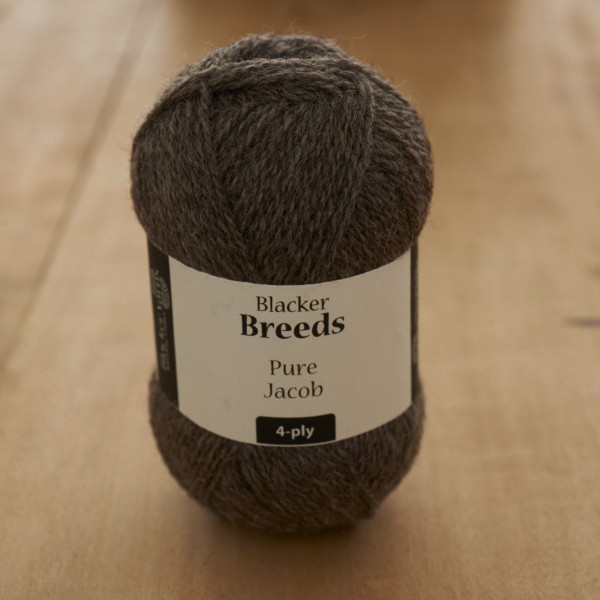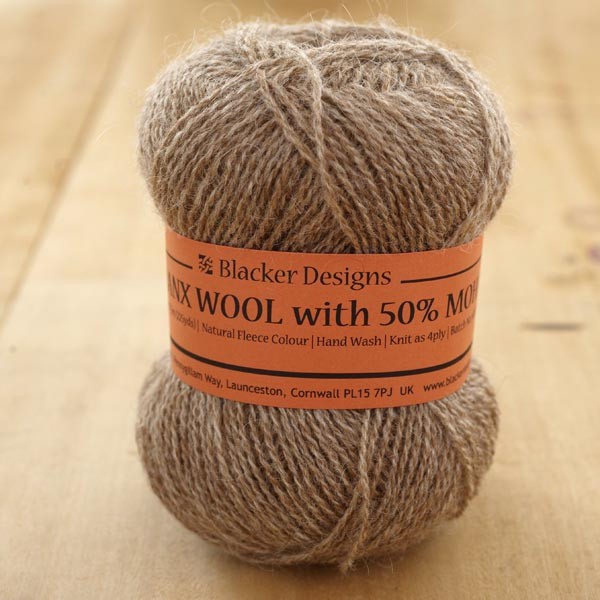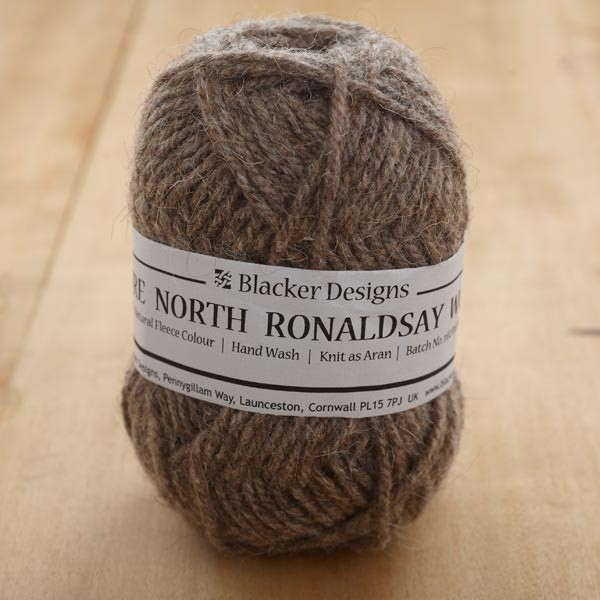During WOVEMBER we have already had a little look at which wool yarns are best suited to certain projects. Interested in finding out if there are pure wools which are best suited to socks Louise tasked designer, and author of Sock Anatomy, Clare Devine in finding out. Happily, Clare jumped at the chance to investigate…
Tasked with writing an article on sock yarn I wanted to question all the things I had come to believe about choosing the best sock yarn. I needed to ask a burning question: Do we really need nylon? I also wanted to think “outside the box” when it came to selecting yarn for socks. The market is full of high twist Bluefaced Leicester and Merino/nylon blends. Don’t get me wrong, I love these sock yarns and the amazing work hand dyers are doing with each skein, however I was convinced there must be more on offer to sock knitters out there. I wanted to know what I was missing out on.
In search of some advice and ideas I chatted to Sue Blacker, from The Natural Fibre Company and Blacker Yarns based in Cornwall. I knew she would have a wealth of knowledge about the subject and I certainly wasn’t disappointed.
There are so many breeds available from Blacker. Where should sock knitters start when assessing yarn for its suitability for socks?
I think the key is to decide what the socks are for:
- Are they soft and cosy bedsocks, which scarcely touch the floor or only a carpet?
- Are they serious welly-boot socks that need to be thick, warm and hard wearing?
- Are they pretty cable and lace designs to show off and do a bit of walking around?
- Are they walking boot or work shoe socks?
There is usually a trade-off between comfort and durability. So I would not use pure merino to make anything but bed socks and I would happily use Jacob to make welly-boot and walking socks. For more decorative socks, then the softer wools blended with some nylon work well, but you can also keep natural by considering silk or flax and also consider the really durable high stitch definition of Guernsey yarns which are pretty much equivalent to a Sport weight.
Not everyone has noticed (!), but we actually rank all our yarns with icons: three sheep are softer than two sheep, which are softer than one sheep. There is a second icon that gives an idea of the micron count of the yarns, and each yarn a combination of icons to give a balance.
The icons appear above the picture of the swatch on each individual yarn and you can also get an idea by selecting on the left-hand side of the page for yarn handle (soft, medium-soft, firm) or fibre type (fine, medium strong)
On balance I would advise against using the 3-sheep icon yarns as they are beautifully soft but less hard wearing. Some people may find the ideal intermediate option is our two-sheep icon yarn or for more durable and rugged wear the one-sheep icon.
There are two main techniques for spinning yarn, woollen and worsted. For a knitter with limited spinning experience (like me) what would you recommend for socks, and why?
This is quite an interesting question: a worsted spun yarn will give you higher definition and a smoother result, so will be good for decorative designs, and generally worsted spun yarns are firmer and harder wearing than woollen spun. However, a woollen spun yarn will gradually felt a little with washing and wearing, so is ideal for boot socks where the thickness will gradually merge. Thus it is possible that a worsted spun boot sock will need repair before a woollen spun one even though woollen spun yarns are generally less hard wearing. The other benefit of woollen spun is the air carried in the yarn will give it more insulating qualities. Also if you are doing colour work, the woollen yarn is “sticky” so easier to work with and the floats will felt to give you added wear.
So again it’s a question of what your socks are for.
Do you think sock yarn needs nylon in it or can other fibres, like mohair, serve to strengthen wool used for sock knitting?
No, a sock yarn does not need nylon. However, nylon has been used because it is cheap and also nylon works well to hold together fine fibres in fine yarns, so the sock knitting machine people like it. For hand knitting, you can substitute mohair or alpaca very easily with wool. Nylon also helps hold smooth fibres like mohair and alpaca together, so again you tend to find that machine knitted socks will always contain nylon. But people managed somehow for a few thousand years until the middle of the last century without nylon. Strengthening the sock can also be done with heel stitch or with additional darning for hard wear.
Socks aren’t always knitted in 4ply, which are your favourite heavier yarns for sock knitting?
For welly boot socks we have an Aran pattern (free) and it’s great.
As noted above, and because we are spoiled for choice, I would select Guernsey yarns for interesting texture, but would be reasonably happy to make socks in any yarn, depending on the purpose.
The benefit of 4-ply and finer yarns is that they make a more dense fabric, which of course helps with wear. I think a 4-ply yarn worked on small needles gives an excellent result.
: : : : : : : : : : : : : : : : : : : : : : : : : : : : : : :
At the end of my chat with Sue I asked her about sourcing yarns suitable for socks that were not your standard BFL and Merino options. I was surprised to hear how many sock yarns they have available at Blacker. Maybe I have been shopping with blinkers on in the past, as Sue assured me, there are plenty of options out there.
We have had a sock yarn around for a while, but it sells quite slowly as it’s relatively plain (white) but we actually produce around 44 different 4-ply yarns (plus the dyed and natural colours in Classic, Elegance and Blacker Swan ranges) and nine Guernsey yarns (all colours).
Based on the information Sue Blacker gave me I had a scout around the Blacker Yarns website and came up with my five favourite options for socks. I am looking forward to stocking up on some of these yarns and testing them out. If you are interested in hearing more about my sock yarn adventures pop over to my blog where I will be sure to keep you up to date with all my sock knitting experiments.
First up a delightful trio of yarns for a design I have been planning to knit for a while. A few weeks ago I featured Emlyn by Rachel Coopey on my blog. These fun colourwork socks would be perfect for these three shades of Ryeland
If you want something more colourful you could try the Blacker Classic 4-ply range, available in 14 shades. The woollen spun yarn would be perfect for colourwork socks. I love the rich and vibrant shades.
I couldn’t resist this Jacob Pure Grey and think it would make the most beautiful cabled socks.
Although this one is a blend I do think it deserves some attention because the Manx Loaghtan is a very rare sheep breed with the most incredible horns (I am sure there are more serious reasons but all I needed to sway me was the fabulous horns). The natural shade of this yarn would be perfectly suited to textures and cables. Really allowing the detail to shine. The Manx has been blended with Mohair for strength and softness. It is available in 4ply and DK so you can have finer socks or a quick pair of DK socks, depending on what knitting mood you are in.
Finally winter is on its way and nobody likes cold feet in boots. While this might not be the softest yarn I think it is going to make the warmest boot socks. They might felt a little, as Sue discussed, but they are going to be warm and comfortable. North Ronaldsay is a rare and fabulous breed of sheep from the Orkneys. They are hardy little things and the fact they adapted to eat seaweed makes me love them even more. The yarn comes in DK and Aran (perfect for that free Blacker pattern) and it is grey! Glorious grey.
It is hugely satisfying that we have a great number of breed yarns that are so well suited to socks and really interesting to learn how the different preparation and finish of the yarn influence their wearability and durability.
Thank you so much to Clare Devine and Sue Blacker for knocking our socks off.
: : Links and contact info : :

Clare Devine
Twitter: @_ClareDevine
Instagram: Clare.Devine
Ravelry: Knitsforklipskaap

Blacker Yarns
Website (and shop): http://www.blackeryarns.co.uk
Twitter: @NatFibreCo and @BlackerYarns
Ravelry: Blacker Yarns
Sue’s blog: Blacker Thoughts



